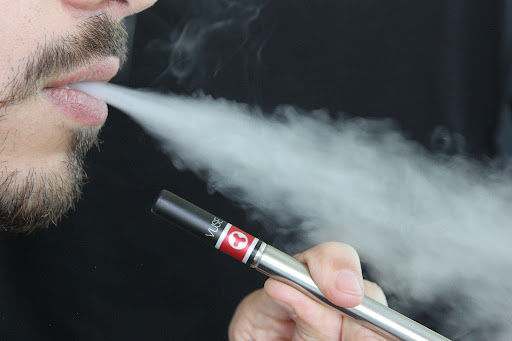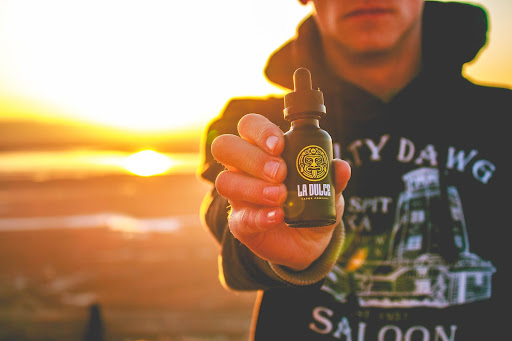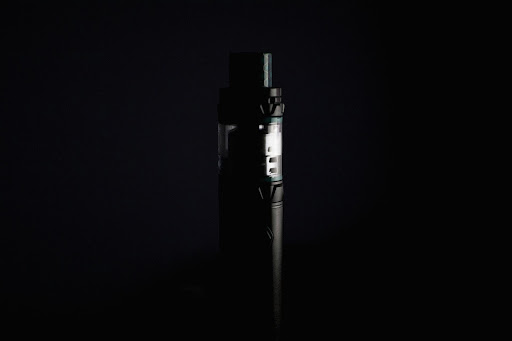- Home
- The History of Vaping
The History of Vaping
People all over the world have been enjoying tobacco for thousands of years. During this period of time, they were unaware of the dangers of smoking tobacco. Once it was determined during the 1950s and 1960s that smoking can lead to certain diseases including cancer, inventors started searching for a way to get the same high from nicotine without the need to smoke cigarettes. This was the very beginning of vaping. The first device invented was a smokeless cigarette without tobacco. Eventually, the world would come to enjoy electronic cigarettes and vapers would be born.
The History of Tobacco Through the Decades
The patent filed by Joseph Robinson in 1927 and granted in 1930 is the first reference to electronic cigarettes ever documented but the device was never manufactured. The credit for the creation of the first device similar to the e-cigarette of today was designed by Herbert A. Gilbert. The patent was filed in 1963 and received in 1965. There is no way of knowing if nicotine was included, but the device was not commercialized. Gilbert believes this was because companies were waiting for the patent to expire prior to commercialization.
Phil Ray began working with his personal doctor Norman Jacobsen in 1979 with the intention of designing the first commercial e-cigarette. The device used evaporated nicotine as opposed to electronic technology. This was when formal research regarding nicotine delivery began. Although the majority of major retailers received the product, the technology was not promising. Jacobsen believes the product failed because it was faulty. Even though the device was not successful, this is where the word vape originated.
The "Heat-Not-Burn” Device
During the early 2000s and 20th centuries, nicotine inhaler device patents continued to be filed by both inventors and tobacco companies. Most worked using either physical propulsion or evaporation but some were similar to the modern versions. The chemical reaction system created during the 1990s became the standard. The "heat-not-burn device created by Reynolds is a combination of a combusted cigarette and a nicotine inhaler.
During the 1990s, products were much more similar to modern e-cigarettes. In 1988, the FDA regulated devices delivering drugs but not tobacco products. Despite this, the FDA was asked for permission by a major tobacco company in the United States to market an e-cigarette version. The request was denied because the drug delivery device was unapproved.
Inventor of Vaping
The first electronic cigarette to enjoy commercial success was developed by Hon Lik in Beijing China at the age of 52. He was a smoker, inventor and pharmacist. He designed the device when his father passed away from lung cancer. The device was developed by Golden Dragon Holdings where he was working and the name changed to Ruyan. The translation is like smoke.

Introduction of E-cigarettes to Europe and the United States
Electronic cigarettes were first released in Europe in April of 2006 and in the United States in August of 2006. It is important to note the website for the United States Border Protection made the first ruling on August 22nd of 2006.
The Health Ministry and The World Health Organization
The Health Ministry in Turkey suspended e-cigarette sales in March of 2008 citing they cause as much harm as traditional cigarettes. At this time, e-cigarettes can be bought online but not in stores located in Turkey. In September of 2008, the WHO or The World Health Organization declared electronic cigarettes are not legitimate for smoking cessation and demanded they be removed. Health New Zealand funded a study in October of 2008.
The analysis showed electronic cigarettes contain toxicants and carcinogens below harmful levels. According to the findings, e-cigarettes present 100 to 1000 times less danger than tobacco cigarettes. The dose of nicotine is similar to nicotine inhalers used for medicinal purposes and a safer alternative.
The 2009 "Smoking Everywhere" Situation
In March of 2009, the FDA directed United States Custom and Border Patrol to reject electronic cigarette entry into the United States because they were unapproved. Sales were banned by Canada claiming a known irritant was added. The Department of Health in Hong Kong also issued a ban with a maximum fine of HK$100,000 and imprisonment for two years for selling or possessing e-cigarettes. The only legal option remaining was legalized tobacco products.
Smoking Everywhere was the electronic cig company notified by the FDA the United States had refused to allow shipments to enter the country. The FDA stated electronic cigarettes are a drug device mandating FDA registration, pre-approval and listing. A federal complaint was filed by Smoking Everywhere on April 28th of 2009 requesting an FDA injunction pertaining to the ban of e-cigs. Smoking Everywhere stated the FDA did not have authority regarding electronic cigarettes.
In May of 2009, a petition was filed by ASH-US calling for electric cigarettes to be regulated by the FDA. NJOY joined this lawsuit and the ECA or Electronic Cigarette Association was formed. This consisted of electronic cigarette retailers, distributors and producers. The goal was to assist with industry standards and speak for the electronic cigs industry. According to the TVECA, this association is the successor of the ECA. On May 11th of 2009, a complaint was filed by the FDA to oppose the complaint from Smoking Everywhere.
Two electronic cigarette brands and 18 cartridges were then tested by the FDA, Smoking Everywhere and NJOY. The tests showed trace amounts of TSNAs or tobacco-specific nitrosamines with similar levels to nicotine cessation products already approved by the FDA. The amount of diethylene glycol in one liquid cartridge was roughly one percent. No diethylene glycol or TSNAs was found in the vapor. The labeling on certain cartridges as 0mg nicotine was shown to have nicotine in trace amounts.

In June of 2009, the Tobacco Control Act and Family Smoking Prevention was signed by President Obama. Regulation of the tobacco industry was now possible by the FDA. An outright ban of cigarettes and nicotine is not possible but flavorings including mint and fruit can be banned. New tobacco products were now required to meet the standards of the FDA. In Panama, sales, distribution and importation of electronic cigarettes were banned. A supplemental brief was filed by the FDA regarding the Smoking Everywhere lawsuit with the Tobacco Control Act cited as precedence.
According to the FDA, they have authority regarding electronic cigarettes and the right to label them as drug devices. The FDA conducted an examination of the device and product labeling claims. The conclusion was under the FDCA, the combination of both a device and drug were met. Two months later, a press release was issued by the FDA. Repeated electronic cigarette concerns for youths were included and use discouraged. The FDA also stated the health warnings on e-cigarettes are not sufficient and they contain toxic chemicals and carcinogens.
In May of 2009, the study conducted by the FDA was reviewed by Exponent, Inc., a scientific consulting firm. NJOY commissioned this report. In regards to certain criticisms made by the FDA study, the report showed the standards of analysis and documentation were poor. The report added the FDA failed to make comparisons with nicotine replacement products approved by the FDA. According to Exponent, the TSNA levels in electronic cigs were similar to those in products with FDA approval. The conclusion of the study was the claims of the FDA that electronic cigs have adverse effects on health were not supported.
In 2009, a ban on e-cigarette imports and sales was taken into consideration by the Israeli Health Ministry. The ban was never implemented, but there were reports in 2013 Israel was thinking about reclassifying or banning tobacco. On August 9th, the press statement issued by the FDA regarding electronic cigarettes was called misleading, incomplete and distorted by Dr. Elizabeth Whelan. She believed the statement was attempting to scare people away from e-cigarettes and untested substitutes in a move to get Americans to purchase the real thing.
In an announcement from Oregon state, two national store chains were prevented from selling electronic cigarettes manufactured by NJOY due to two separate settlements. The stores were TA Operating and Pilot Travel centers. The company was further required to provide advance notice to the Attorney General prior to selling electronic cigs in the state. Copies of all advertising for electronic cigarettes and scientific studies supporting their claims were now required. All Oregon sales were stopped voluntarily by NJOY.
A lawsuit was announced by John Kroger, the Attorney General of Oregon against Smoking Everywhere. The allegations were false health claims were made by the company regarding the nicotine device, while sweet flavors were used to attract children. Smoking Everywhere would not settle the lawsuit. A settlement was eventually reached in August of 2010. Brazil became involved and electronic cigarette sales, ads and imports were banned.

The first legislation regarding banning the use of electronic cigarettes indoors where smoking is banned and prohibited until the age of 19 passed in Suffolk County, New York. The statement made by the United States FDA resulted in an electronic cigarette ban in Saudi Arabia. The FDA stated e-cigs contain harmful substances including toxic and carcinogenic substances. The AES was filed by Amicus in September of 2009 to support the Smoking Everywhere vs. FDA lawsuit plaintiff.
A bill was passed in California banning electronic cigarette sales throughout the state. The bill was vetoed by Governor Schwarzenegger. He stated if adults are interested in purchasing and consuming these products they have a right to do so provided they understand the health risks and there is no change in legal status according to current federal laws.
The CASAA was formed and the board members were elected. The organization was established with both retailers and consumers with the following missions.
1) Ensuring reduced harm, affordable and effective alternatives were available.
2) Increasing public education and awareness.
3) Offering encouragement for testing and developing products with reasonable regulations and safety standards.
4) Promoting benefits attained by reduced harm alternatives.
The number of elected vendors to the CASSA board is limited to make certain the organization remains consumer-based. This means the super-majority remains in control of the consumer board members. Recognition was achieved with UK ASH that all available products must deliver nicotine safely without any of the harmful components contained in tobacco. Conventional NTs were recommended for anyone interested in quitting smoking.
January 14th of 2010 will be remembered in history as the day the injunction Smoking Everywhere was seeking to prohibit e-cigs from being seized by the FDA as drug devices were granted by Judge Leon. This was when e-cigs began to receive substantial gains in popularity.
Increase in Vaping Popularity
An official position was reached by the British government in 2012. Vaping was classified as a tool to reduce harm and may help individuals stop smoking. Later in the year, the AEMSA was formed by a group making e-liquids to regulate vape juice quality. Electronic cigarettes were now a permanent part of society. E-cigs were endorsed by celebrities and new versions appeared from hundreds of competitors. The colors and styles reflected a new fashion statement. Barrels were available in an assortment of colors with LED tips glowing green, purple or blue.
To this day, a lot of manufacturers consider 2010 the year popularity took off. During the course of the year, the manufacturers of vape realized consumers wanted more than what was available with electronic cigarettes. Consumers wanted an experience similar to a hookah with more flavor and clouds. Vape manufacturers found the solution with larger, technologically advanced pen mods. Although pen mods were preferable, consumers wanted even more.

The first box mod kits became available commercially in 2010 offering more control and power and increasing popularity even further. Box mods have retained their popularity because they provide ultimate control. Vapers can select the atomizers, tanks, coils and batteries they prefer. Some people even like to build their own coils. The complexity of large box mods has not affected the popularity. Serious vapers like to work with mods for the creation of unique vaping sensations.
Certain people are still enjoying the clunky box mods purchased over a decade ago. Vape hobbyists are different and have a preference for purchasing and using new box mods. Products are consistently refined by the manufacturers due to the high sophistication levels of the vape audience. Vapers insist on high levels of flavor production, smoke production and the ability to customize their vape products.
The global e-cigarette and vape market was estimated at 12.41 billion in 2019. Due to the consistent increases in popularity, the expectation is the annual growth rate will reach 23.8 percent as more time passes. There is no doubt the popularity of vaping will continue.
 Loading... Please wait...
Loading... Please wait...










